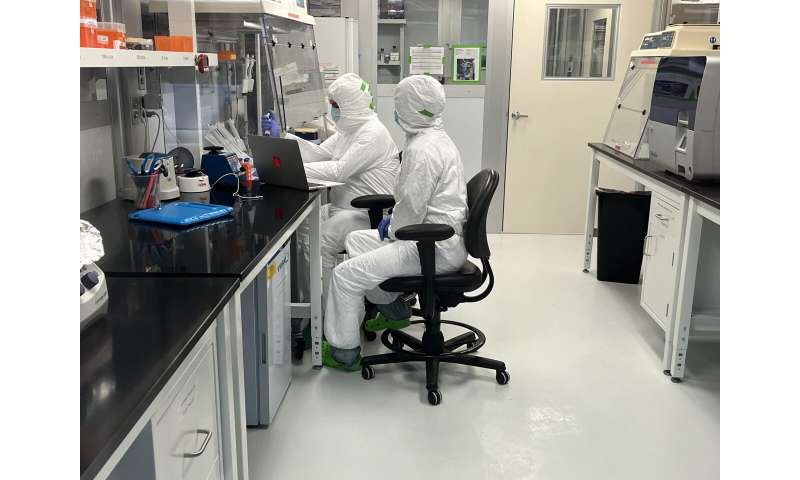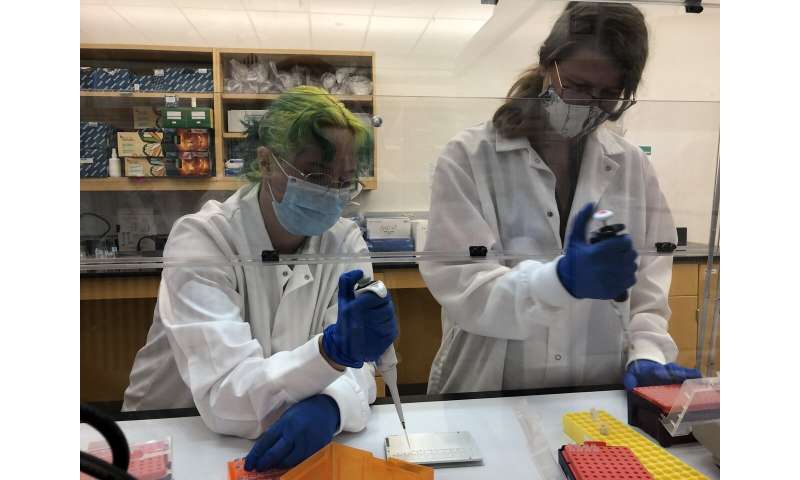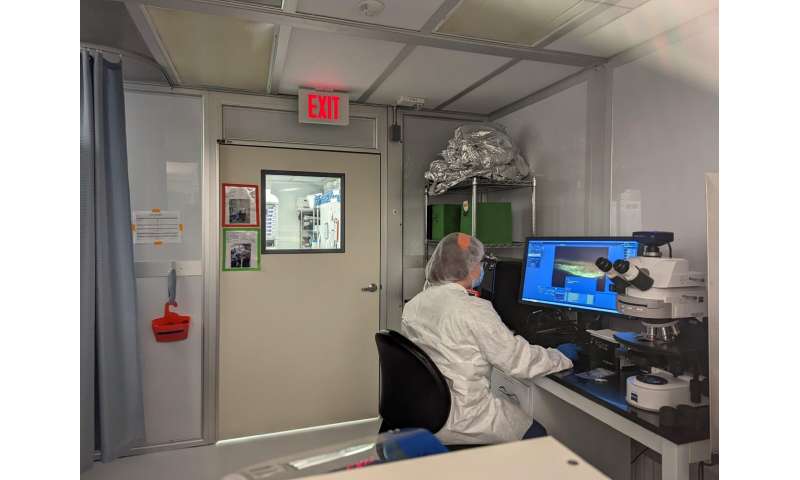Study using DNA analysis of sacrificial spider monkey suggests Mesoamerican diplomacy

A multimethod archaeological study of a spider monkey sacrificed at Teotihuacàn, located approximately 25 miles from Mexico City, provides the earliest evidence of primate captivity and translocation in the Americas over 1,500 years ago.
Researchers at the University of Oklahoma's Laboratories of Molecular Anthropology and Microbiome Research led the genetic analysis of the spider monkey's skeleton. The OU team includes study co-authors Courtney Hofman, Ph.D., President's Associates Presidential Professor in the Department of Anthropology, Dodge Family College of Arts and Sciences, with graduate student Robin Singleton and laboratory technician Karissa Hughes.
"Geoffrey's spider monkeys are not found near Teotihuacàn today," Hofman said. "Ancient DNA analysis of this spider monkey sought to identify the subspecies of the spider monkey, which can provide insight into ancient trade networks."
"We were able to confirm that the spider monkey was most closely related to two endangered populations, the Mexican and the Yucatan spider monkey subspecies," she added. "Using additional lines of evidence, including isotopic analysis, we hypothesized that this animal was of the Mexican subspecies, which today lives in parts of Mexico, Guatemala and Honduras. The presence of this animal in the central Mexican city of Teotihuacàn suggests that there was greater interaction with the Maya than previously understood and perhaps this spider monkey was a diplomatic gift."
-

Courtney Hofman, professor of anthropology at the University of Oklahoma, and Laboratories of Molecular Anthropology and Microbiome Research lab technician Karissa Hughes work in OU's LMAMR ancient DNA lab. Credit: Robin Singleton -

University of Oklahoma graduate student Robin Singleton examines material from Teotihuacàn under a microscope in the Laboratories of Molecular Anthropology and Microbiome Research ancient DNA lab. Credit: Courtney Hofman.
The study, Earliest evidence of primate captivity and translocation supports gift diplomacy between Teotihuacan and the Maya, was published Nov. 21 in the journal Proceedings of the National Academy of Sciences and was featured in Science.
Nawa Sugiyama, assistant professor of anthropology at the University of California, Riverside, is the first author. In addition to the OU team, co-authors include researchers from Arizona State University; the Archéologie des Amériques in Paris, France; the Smithsonian Museum Conservation Institute; the RIKEN Institute in Kobe, Japan; and Washington State University.
More information:
Nawa Sugiyama et al, Earliest evidence of primate captivity and translocation supports gift diplomacy between Teotihuacan and the Maya, Proceedings of the National Academy of Sciences (2022). DOI: 10.1073/pnas.2212431119
Provided by University of Oklahoma